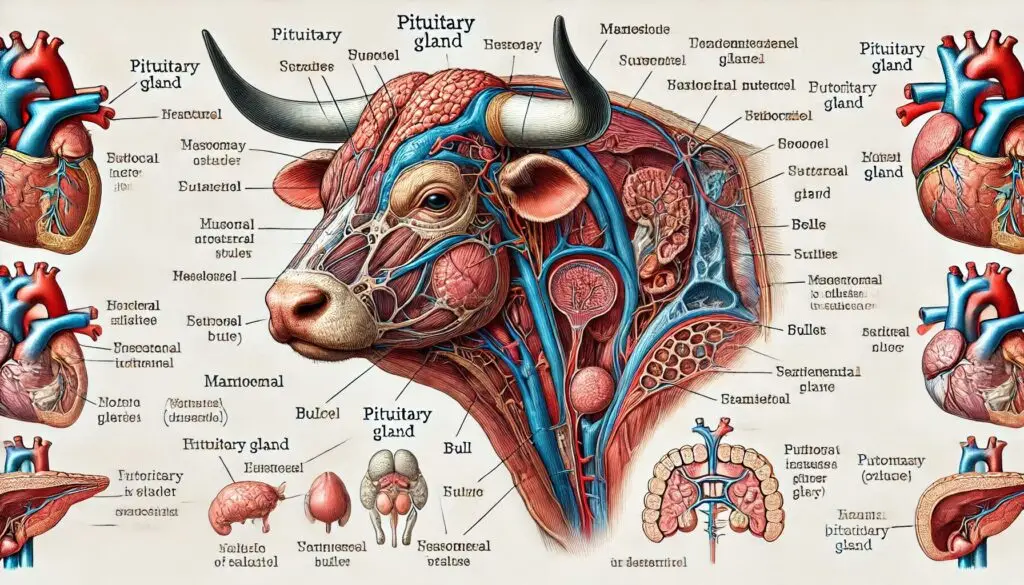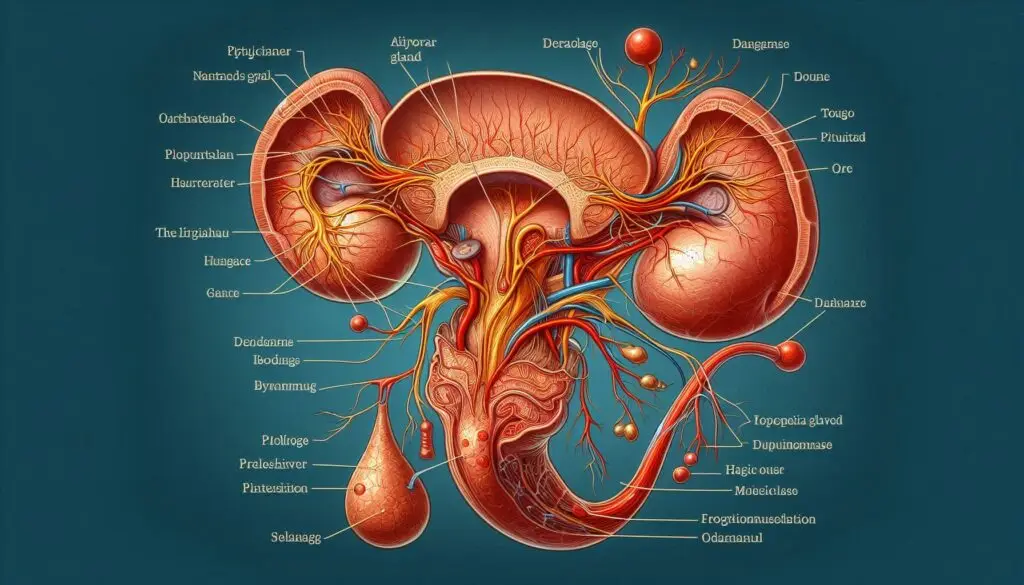Pituitary Gland

Introduction
The pituitary gland is a small but powerful organ located at the base of the brain. It plays a vital role in regulating various physiological processes in livestock, including growth, reproduction, and lactation. Understanding the functions and importance of this gland can help improve animal health and productivity.
In this article, we will explore the structure and functions of the pituitary gland in livestock. We will also discuss common abnormalities and their implications for animal health. For more detailed information about the endocrine system, you can visit National Institute of Health.
Anatomy of the Pituitary Gland
Structure of the Pituitary Gland
The pituitary gland consists of two main lobes:
Anterior Lobe (Adenohypophysis)
The anterior lobe produces several key hormones that influence various bodily functions. These hormones include:
- Growth Hormone (GH): Promotes growth and development.
- Prolactin (PRL): Stimulates milk production in lactating females.
- Follicle-Stimulating Hormone (FSH): Regulates reproductive processes.
- Luteinizing Hormone (LH): Triggers ovulation and supports reproductive health.
For more information on these hormones, you can refer to PubMed Central.
Posterior Lobe (Neurohypophysis)
The posterior lobe does not produce hormones itself but stores and releases hormones made in the hypothalamus. The key hormones include:
- Antidiuretic Hormone (ADH): Helps regulate water balance.
- Oxytocin: Plays a role in childbirth and lactation.
Location and Size
The pituitary gland is pea-sized and sits just below the hypothalamus. Its location allows it to receive signals from the brain, which helps regulate hormone release effectively.
Functions of the Pituitary Gland
Hormonal Regulation
The pituitary gland acts as a master regulator of hormone secretion in livestock. It receives signals from the hypothalamus, which releases stimulating or inhibiting hormones. This feedback loop ensures that hormone levels remain balanced.
Growth Regulation
Growth hormone is essential for normal growth and development in livestock. It promotes protein synthesis, increases muscle mass, and enhances overall growth rates. For more insights on growth regulation, check out Animal Science Journal.
Reproductive Functions
The pituitary gland plays a critical role in reproduction. FSH and LH are vital for regulating the estrous cycle and ovulation in female livestock. In males, these hormones stimulate testosterone production, which is crucial for sperm development.
Lactation Support
Prolactin is key for milk production in dairy animals. It stimulates mammary gland development during pregnancy and initiates milk secretion after calving.
Interaction with Other Endocrine Glands
The pituitary gland interacts with other endocrine glands to maintain homeostasis. For example:
- The thyroid gland releases thyroid hormones that regulate metabolism.
- The adrenal glands produce cortisol, which helps manage stress responses.
For more detailed information on endocrine interactions, visit Endocrine Society.
Pathological Conditions Related to the Pituitary Gland
Common Abnormalities
Abnormalities in the pituitary gland can lead to serious health issues in livestock. Here are some common conditions:
Pituitary Aplasia or Hypoplasia
This condition involves underdevelopment or absence of the pituitary gland. It can lead to prolonged gestation periods and result in small-for-gestational-age calves that often do not survive birth. Breeds such as Holstein-Friesian are particularly affected.
Combined Pituitary and Adrenal Gland Abnormalities
This condition can cause severe complications during parturition. Poor cervical relaxation may lead to dystocia (difficult birth), resulting in significant fetal growth issues.
For further reading on these conditions, refer to Veterinary Journal.
Hormonal Imbalances
Hormonal imbalances due to pituitary dysfunction can have widespread effects on livestock health:
- Excess Growth Hormone: Can lead to acromegaly-like symptoms.
- Insufficient Prolactin: May result in inadequate milk production.
Research Insights into Pituitary Function
Advances in Understanding Molecular Mechanisms
Recent research has focused on understanding how the pituitary gland functions at a molecular level. Studies show that various genes play roles in regulating hormone production and secretion.
Transcriptomic Analyses
Transcriptomic studies help identify differentially expressed genes related to growth and development in livestock. These insights can lead to better management practices for enhancing growth rates.
Proteomic Studies
Proteomic studies have uncovered key proteins involved in puberty onset. Understanding these proteins can help improve breeding programs by identifying optimal breeding times for livestock.
For more information on recent research findings, visit Journal of Animal Science.
Practical Implications for Livestock Management
Enhancing Animal Health Through Monitoring
Monitoring pituitary function is essential for maintaining animal health. Regular veterinary check-ups can help identify any abnormalities early on.
Nutritional Considerations
Nutrition plays a significant role in supporting pituitary function. Providing balanced diets rich in vitamins and minerals can promote optimal hormone production.
Genetic Selection Strategies
Breeding programs should consider genetic factors influencing pituitary function. Selecting animals with desirable traits can improve overall herd health and productivity.
Conclusion
The pituitary gland is a vital component of the endocrine system in livestock. Its hormones regulate growth, reproduction, and lactation, making it essential for animal health and productivity. Understanding its structure, function, and potential abnormalities can help farmers manage their herds more effectively.
More from Veterinary Anatomy:
Electron Microscopes



Responses